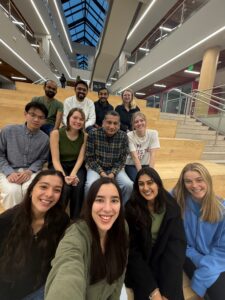
Our research covers a wide spectrum of topics related to the transport, characterization, and removal of environmental colloids. We collaborate synergistically with microbiologists, chemical engineers, mathematicians, medical doctors, Earth scientists, ecologists, and other environmental engineers and scientists. In particular, we investigate two seemingly disparate topics; water purification (treatment of drinking water, industrial and municipal wastewater including produced water from hydraulic fracturing operations, etc.) and tropospheric aerosols:
(1) Membrane technologies for water purification. We investigate bacteria and virus removal by microfiltration or ultrafiltration. MF/UF are also being used as pretreatment to reduce fouling of higher-pressure membranes (i.e. nanofiltration and reverse osmosis). MF/UF fouling control and increasing contaminant removal by these low-pressure membranes following pretreatment by chemical- or electrocoagulation or by periodic backwashing is being studied. We are actively researching desalination by NF and RO with applications to potable reuse.
(2) Pretreatment. We have pioneered the use of aluminum and iron electrocoagulation as pretreatment for MF/UF and EC’s ability to remove/inactivate viruses. Electro- and conventional chemical coagulation are being investigated for treating produced water along with dissolved air flotation.
(3) Aerosols. Our research focuses on the elemental/isotopic characterization and source apportionment of primary inhalable particulate matter. We developed novel techniques for rare earths and platinum group elements in PM2.5 and PM10. We were amongst the first to link rare earth metals to emissions of petroleum refining catalytic cracking catalysts. We used lanthanoids as crustal markers to apportion long-range transported Sahara-Sahel dust to the Houston area. We linked rhodium, palladium, and platinum to light-duty gasoline-driven vehicles. Currently, we are using Nd, Sr, and Pb isotopes for dust characterization and implementing next generation sequencing to provide clues to biological components of aerosols.
